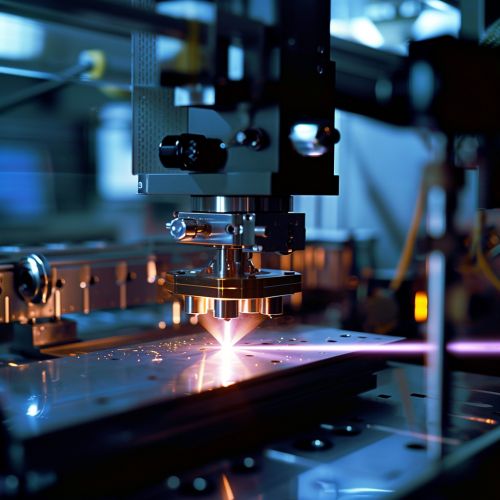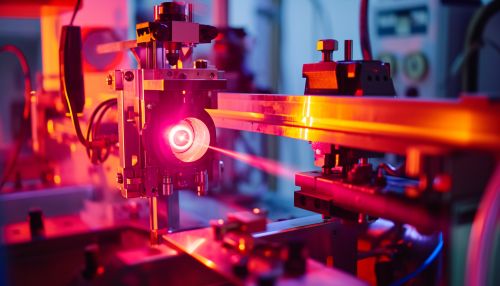Ultrafast Laser Physics
Introduction
Ultrafast laser physics is a branch of physics that deals with the study and application of lasers with pulse durations in the femtosecond (10^-15 seconds) to attosecond (10^-18 seconds) range. This field of study is significant in various scientific and technological areas, including chemistry, biology, material science, and optics.


Ultrafast Lasers
Ultrafast lasers are lasers that emit light pulses with an extremely short duration, typically in the femtosecond to attosecond range. These lasers are often used in research and industrial applications where high precision and control over the temporal and spatial characteristics of the laser beam are required.
Generation of Ultrafast Pulses
The generation of ultrafast pulses involves a process known as mode-locking. This technique synchronizes different modes of a laser to interfere constructively, resulting in a pulsed output with a very short duration. The most common types of mode-locked lasers used for generating ultrafast pulses are titanium-sapphire lasers and fiber lasers.
Pulse Measurement and Characterization
The measurement and characterization of ultrafast pulses are crucial for understanding and controlling the properties of these pulses. Techniques such as autocorrelation, frequency-resolved optical gating (FROG), and spectral phase interferometry for direct electric-field reconstruction (SPIDER) are commonly used for this purpose.
Applications of Ultrafast Lasers
Ultrafast lasers have a wide range of applications in various fields due to their unique properties.
Chemistry
In chemistry, ultrafast lasers are used to study chemical reactions on the femtosecond timescale. This allows scientists to observe the dynamics of chemical reactions in real-time, providing insights into the fundamental processes of chemistry.
Biology
Ultrafast lasers are also used in biology for imaging and manipulating biological systems. Techniques such as two-photon excitation microscopy and optogenetics utilize the unique properties of ultrafast lasers for high-resolution imaging and precise control of biological processes.
Material Science
In material science, ultrafast lasers are used for precision machining and processing of materials. The high peak power and short pulse duration of these lasers allow for precise material removal with minimal heat damage, making them ideal for applications such as laser cutting, drilling, and ablation.
Optics
Ultrafast lasers play a crucial role in optics, particularly in the field of nonlinear optics. The high peak power of these lasers can induce nonlinear optical effects, which are used for generating and manipulating light in ways not possible with conventional lasers.
Future Directions
The field of ultrafast laser physics continues to evolve, with ongoing research aimed at developing lasers with shorter pulse durations, higher peak powers, and broader wavelength ranges. These advancements will open up new possibilities for scientific research and technological applications.
